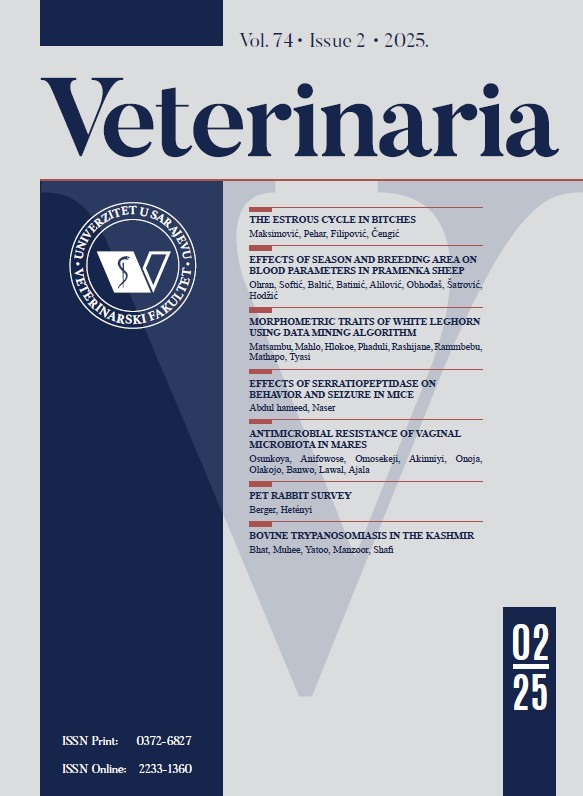A cross- sectional study of Leishmania infantum infection in stray cats in Algiers’ suburbs, Algeria, and evaluation of serological and molecular tests for its diagnosis
DOI:
https://doi.org/10.51607/22331360.2022.71.1.73Keywords:
Algiers’suburbs, Leishmania infantum, qPCR, serological tests, Stray catsAbstract
In the Mediterranean basin, the common and most important cause of zoonotic visceral leishmaniasis (ZVL) is Leishmaniainfantum. Although dogs represent the main reservoir/ host of L. infantum,andthe most significant risk factor of ZVL, many cases of Feline leishmaniasis (FeL) have been reported within ZVL’s endemic areas.When no data existed, the present study was carried out: first to determine the prevalence of Leishmaniasis caused by L. infantumin stray cats in Algiers’ suburbs, Algeriaand, second,to evaluate the accuracy of serological and molecular tests and their reliable combination to be used in epidemiological surveys. A total of 388 blood samples from stray cats were tested with IFAT, ELISA and qPCR. The results showed that 17% were positive by IFAT, 22.42% were positive by ELISA and 36,6 % were positive by qPCR. The Kappa index (P < 0.05) showed a strong agreement between IFAT and ELISA(k= 0.83), and moderate agreement between IFAT and qPCR (k= 0.524). The sensitivity was 100 % for both ELISA and qPCR. Based on the results obtained, it is concluded that L. infantum was detected among cats in Asub, Algeria. However, further studies are necessaryto determine more accurately the role of cats in the epidemiological lifecycle of the protozoan and whether this species should really have considered as an alternative/ reservoir of leishmaniasis.
Downloads
Published
How to Cite
Issue
Section
License
Copyright (c) 2022 Abdellah Mohamed Cherif, Aicha Yassmine Bellatreche, Khatima Ait-Oudhia

This work is licensed under a Creative Commons Attribution 4.0 International License.








